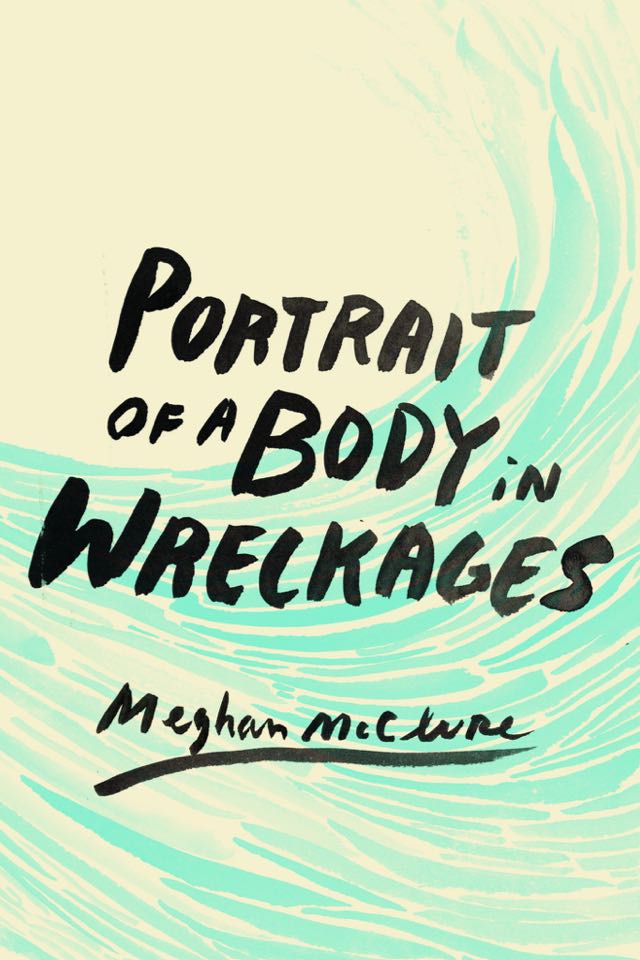Portrait of a Body in Wreckages
— Logan February
In Portrait of a Body in Wreckages, Meghan McClure demonstrates herself as a masterful spokesperson for the body by going beyond the borders of flesh and beneath the skin. Most would write of what the body remembers of trauma and grace. McClure’s incision is deeper, she examines how the body remembers these artifacts.

More than anything, I applaud the voice of the work. McClure is cold and unflinching in the telling of violence, but tender and intimate when she speaks of how aches settle in slowly until suddenly they are constant.
When she lays herself bare, the voice—somber and crackling—is what connects the strewn fragments of the naked self. Her work teems with hauntingly honest, meditative insights into our most vulnerable predicament—having to exist in a vessel.
It makes sense. Our bodies are our points of contact with the world. The question at the core of the book is the question of what happens to the body—what is the body—when it is faltering, stretching forever toward some shifting and unknown horizon.
When the body is in wreckages.
She writes: What’s so impressive about a body except what it contains? It breaks so easily. Give me your arm—I will show you.
Portrait of a Body in Wreckages drips with wounds from the past as it bravely dissects the psychology of trauma.
McClure writes the body as a sensory space:
“My wound is geography.”
And this is my way of saying, I am a place. Come visit, stay, inhabit. My pain will act on you, and you will act on it.
Sure, she is at times pessimistic, perhaps cruel-sounding. Pain reminds me of the space I take up. Without pain,
she writes, the body becomes invisible.
A reflection so severely candid, so gutting, I imagine it to be the body itself confessing its desires, its euphoria and its bitterness.
Although she has written that pain is a solitary matter,
in a different fragment, she confesses further: All memory is a form of longing. Desire lines my neurons, like ice along branches in mid-January Ohio.
Suddenly, like silk slipping off warm skin, we are placed at the site of our desire:
Closer is the call of intimacy. Get close faster is the call of desire.
•
I lay next to you and suddenly the body I haven’t considered all day matters.
I was particularly electrified by this presentation of desire as a kind of physical sense—desire and what to do with it. She gently pleads: I’m giving you these wreckages because I want you to love me. People are too big to love whole, and so we love them in parts. These are my parts.
Portrait of a Body in Wreckages is a brutally intricate thesis on vulnerability, elegantly presented in spare form. This chapbook is deserving of numerous re-reads. It is a trustworthy commentary on the physical plane of the self. I leave you with another of my favorite quotes from the book:
Flesh and stone are the same. Strike them against any other thing and there is a reaction. Often blood, sometimes water.